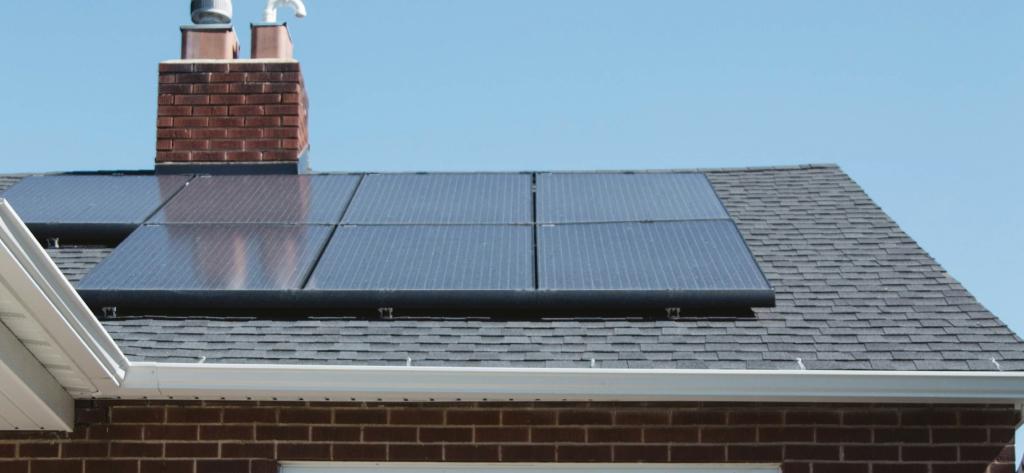Article
How Net Metering Works in Pennsylvania

Throughout Pennsylvania, homeowners and businesses are taking control of their electric bills by participating in net metering programs. These arrangements allow customers to generate power using renewable energy sources and send any excess electricity back to the grid in exchange for credits on their monthly bills. These customers can enjoy massive savings on utility bills and enhanced sustainability while contributing to the state’s renewable energy efforts.
Ready to learn more about net metering in PA? Join us for a comprehensive guide to get you started!
What is Net Metering?
Net energy metering, or net metering, is a billing arrangement between utility companies and customers with applicable renewable energy sources that allows customer-generators to create electricity and sell the excess back to their provider for other customers to use. Credits are applied to each monthly utility bill, quantified in kilowatt-hours (kWh). This system allows customers with eligible solar panel arrays to offset their power consumption with renewable energy production.
To participate in a net metering program in Pennsylvania, utility customers must install an appropriate solar panel array that connects to the grid by way of a bidirectional meter, which measures the amount of energy used and generated by the system.
Net Metering in Pennsylvania: An Overview
The Alternative Energy Portfolio Standards Act of 2004 (AEPS) requires utility companies to source a certain percentage of electricity from renewable resources. This act set in motion the adoption of net metering programs throughout Pennsylvania. During the 2022-2023 compliance year, 18% of energy distributed by PA utility companies came from renewable resources such as solar, wind, hydroelectric, and other sources.
Homeowners, businesses, schools, and government agencies can participate in various net metering programs in PA as long as they meet specific eligibility criteria for their classification. For example, homeowners must have solar panel arrays with capacities no larger than 50 kW and must be interconnected with the grid via a bidirectional meter. Most commercial entities can have systems up to 3 MW, while those that make their energy available to the grid during emergencies can have networks as large as 5 MW.
Many states have passed legislation supporting the creation of community solar projects that allow renters and others without private arrays to participate in net metering programs through off-site solar facilities, but Pennsylvania isn’t quite there yet. However, as of publication, House Bill 1842 is under consideration by the state Senate. This bill would create third-party solar facilities and give residents the opportunity to enjoy reduced utility costs by subscribing to these programs.
How Does Net Metering Work in Pennsylvania?
Solar panel installation is the first step to becoming a net metering customer in Pennsylvania. A qualified solar installer will assess your property to determine if you’re a good candidate for solar power. Once installation is complete, a representative from your utility company will inspect the system and install a bidirectional meter to track the amount of energy generated and used during each billing cycle. Each month that you create more electricity than you use, you’ll receive credits on your account to offset future costs.

How Solar Panels Keep You Powered During Outages
Types of Net Metering Reimbursements in Pennsylvania
Curious about how to get paid for the energy created by your solar panel array? Here are two types of reimbursements available:
Full Retail Net Metering
Each month, utility companies in Pennsylvania weigh the energy usage and production of net metering customers. When those customers generate more electricity than they use, they receive a credit to their account totaling the full retail rate of that power. At the end of the annual billing cycle, any outstanding credits are reimbursed at the “price to compare” rate, which includes generation and transmission but not the distribution component of the full retail rate.
Alternative Energy Credit (AEC) Generation
Alternative Energy Credits (AECs) are identical to Renewable Energy Credits (RECs). One credit equals 1,000 kW or 1 MW of electricity and can be sold to corporations, government entities, and industrial facilities to offset their carbon footprints. It’s possible to participate in net metering programs while accumulating and selling AECs since credits are certificates demonstrating the generation of renewable energy, regardless of how they’re used. As such, you may be able to pay off your solar panel array even faster.
Benefits of Net Metering in Pennsylvania
Pennsylvania residents can enjoy plenty of perks by participating in net metering programs. Here are some of the highlights:
Cost Savings
Reduced utility bills are a major incentive for net metering customers in PA. By accumulating credits throughout the sunny months, you can enjoy lower monthly costs all year long – even when the sun isn’t shining.
While the up-front cost of a solar panel array in Pennsylvania may seem high at first, they typically pay for themselves within 6 to 10 years.
Encouragement of Renewable Energy
Net metering supports the adoption of renewable fuel sources like solar and wind, contributing to cleaner energy solutions. When you participate in these programs, you help the state move closer to achieving benchmarks for renewable energy.
Environmental Impact
Net metering programs help ensure that all that energy generated by solar panel systems doesn’t go to waste. By redirecting excess power to the grid, this arrangement can minimize your reliance on fossil fuels, reduce your carbon footprint, and help move your regional electrical grid toward a more sustainable future.
Economic Incentives
Smaller utility bills aren’t the only financial incentive for net metering in Pennsylvania. Homeowners and businesses can enjoy savings through city-wide programs like Solarize Philly and the Philadelphia Solar Rebate, as well as federal tax credits.
Studies have also shown that solar panels increase property values by an average of 4.1%.
Additionally, prolific energy producers can earn Solar Renewable Energy Credits (SRECs) for each megawatt of energy generated, which they can sell for cash.
How to Get Started with Net Metering in Pennsylvania
If you’re ready to lower your energy bills with net metering in Pennsylvania, you’ll want to partner with a trusted solar installer who can help you design and implement a powerful and efficient system.
Your technician will perform a cost/benefit analysis to help you understand the economics of your system and assess your site to determine the optimal location for your array. After completing the installation process, they will inspect your new solar panel system to ensure everything is working properly.
Of course, installation is only the first step to reaping the rewards of renewable energy. The right solar provider will also perform ongoing monitoring and offer support to help you troubleshoot any issues that arise in the future. At Solar Energy World, we even help you navigate the application process for various rebate programs to help you make the most of your investment.
The Role of Net Metering in Pennsylvania
As a net metering customer in Pennsylvania, you can enjoy lower utility bills, improved sustainability, and other perks like increased property values. Installing a solar panel array on your rooftop or property can offer benefits for decades to come!
The experts at Solar Energy World can help you assess your savings potential, install the perfect system for your needs, and maintain your solar panel array throughout its lifespan. Check your eligibility with a free solar estimate to get started!
Want a Free Solar Estimate?
Fill out the form to get started today.

